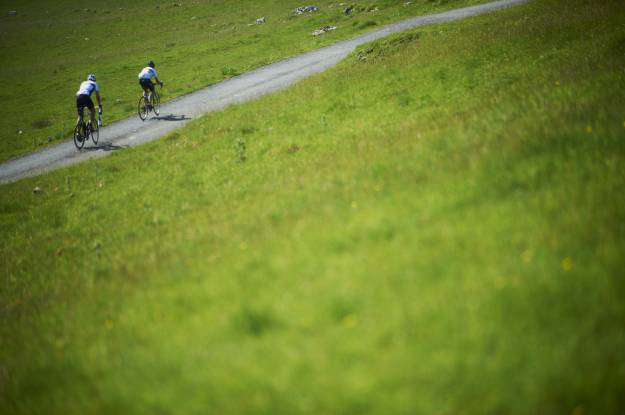Daily Commuting Tip - Rim Check
Posted: 27th October 2009 | Eddie Allen
More: Daily Commuting Tips Archive
I was checking over my regular commuting bike last night - oiling the chain, pumping up the tyres, etc when I noticed that my wheel rims are coming to the end of their service life. Not bad after 9 solid years of commuting and off roading in all conditions. So I thought it would be a good idea to alert other bicycle users about what to look for, and the consequences if you neglect your wheel rims.
First of all, if you've got disc brakes or hub brakes (or any other kind of brake that doesn't use the wheel rim as the braking surface) then move along, nothing to see... Ditto if you've got an old roadster or cheap bike with steel rims - your knees will wear out before steel rims will.
However if you've got aluminium rims and rim brakes (read cantilevers, V brakes, calliper brakes, hydraulic rim brakes etc) then you should regularly inspect your wheel rims for signs of wear.
What happens when a rim wears out
If you're lucky, you'll be pumping up your tyres nice and hard, you'll hear a crack, then nano-seconds later you'll hear a loud bang. When the dust settles and you've recovered from the shock, you'll notice that a razor sharp aluminium hoop has parted company from your wheel. You'll also notice that your tyre sidewall is probably ripped and your tube is history.
If you're unlucky, the same thing will happen to you when you're out riding. You can fill in the rest...
What to look for
Visually inspect your braking surfaces for excess wear. Usually this manifests itself as a concave profile on the rim. The easiest way to see this is by placing a straight edge (e.g. a metal ruler) across the rim surface. You'll see a significant area of daylight between the rim and the ruler if wear is excessive.
Also look for grooving running around the rim, often caused by grit lodged in the brake blocks. These grooves can be the first places that the rim can fail.
Wear indicators
However, don't confuse these grooves with wear indicator grooves found on some rims. These handy features show you when it's time to replace the rims - when the groove disappears, it's time to go shopping. Some manufacturers have other systems to show when rims need replacing, such as indentations or holes that appear at a certain point when the rim needs replacing.
Not all rims are created equal
Some rims, especially lightweight ones, have a very thin braking surface, meaning that they have a much reduced service life. Heavy duty touring rims like Sun Rhynos, Alesa Endeavours and others have a thicker, heavier braking surface which results in much higher mileage between rim replacement. Some high spec rims have a ceramic coating which drastically reduces rim wear and improves braking and are well worth the investment for high mileage riders with deep pockets.
Avoid the issue entirely
If you're in the market for a durable commuter bike, look for a bike with hub brakes (preferable low maintence drum or roller brakes) and completely avoid the rim wear issue.









